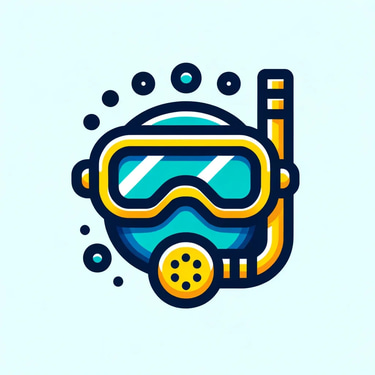Ghost Nets: The Silent Killers Beneath the Surface
Learn how ghost nets—lost or abandoned fishing gear—continue to catch fish and entangle marine life for years. Discover impacts on animals and reefs, and how global removal and prevention efforts are making a difference.
PRESERVING OUR GREAT LAKES AND OCEANS


Ghost Nets: The Silent Killers Beneath the Surface
What Are Ghost Nets and Why They Persist
Ghost nets consist of fishing gear lost, abandoned, or discarded at sea. No longer controlled by fishers, they drift or protrude from reefs and continue “ghost fishing” indiscriminately. Often made of durable synthetic plastic, these nets can remain active for decades.
Every year, an estimated 500,000 to 1 million tonnes of gear is lost—about 10 percent of all marine litter—with fishing nets accounting for roughly 46 percent of plastic in the Great Pacific Garbage Patch.
Impacts on Marine Life and Habitats
Ghost nets trap and injure marine life: fish, sea turtles, dolphins, seals, sharks, seabirds and even whales can become entangled and die from suffocation, starvation or infection. Some may survive for months while suffering serious wounds.
They can smother coral reefs when they sink and drape over structure, breaking apart coral formation, shading reef surfaces, and blocking sunlight essential for coral health. Recovery can take years, if it occurs at all.
Beyond entanglement, nets fragment into microplastics that are ingested by marine organisms, reducing their health and entering the human food chain.
Human Safety and Economic Impacts
Ghost nets pose navigational hazards—damaging propellers and entangling divers and swimmers. Their entanglement also harms commercial fisheries by killing valuable species that could otherwise be harvested. Often lost gear goes untended, resulting in gradual loss of marine productivity.
It’s estimated that over 90 percent of species caught in ghost nets are commercially valuable. In Chesapeake Bay, abandoned crab pots alone trap over 1.25 million blue crabs each year, costing fisheries over $175,000 annually in Nova Scotia.
Global Cleanup and Prevention Efforts
Around the world, organizations and fishing communities are leading ghost net cleanups and establishing prevention initiatives. In Thailand, volunteers and local divers have collected and recycled over 130 tonnes of ghost gear, while efforts in India converted 26,000 kg of nets into sustainable income for fishers.
Groups like the Olive Ridley Project and Guardianes del Mar work to free entangled wildlife and return nets to local communities, where recycled material supports conservation and local livelihoods.
Large-scale efforts under the Global Ghost Gear Initiative (GGGI) help map gear hotspots and develop gear tagging, traceability, biodegradable net alternatives, fishery regulation, and retrieval systems.
How Divers and Ocean Lovers Can Help
Report and document ghost gear when encountered on dives or beaches so removal teams can act.
Support retrieval programs like local dive cleanups or NGOs focused on recycling or removing nets.
Advocate for better fishing gear practices, including marking nets, incentivizing recycling, and promoting biodegradable materials.
Choose seafood sourced responsibly, certified under sustainable fisheries programs.
Share knowledge and awareness on the problem—understanding it is the first step toward meaningful change.
Happy and safe diving,
The ScubaBlast Team
International Union for Conservation of Nature (IUCN). (2015, March 10). Ghost nets: silent killers in the oceans. Retrieved from https://iucn.org/content/ghost-nets-silent-killers-oceans
Coral Reef Alliance. (n.d.). Ghost Gear is Killing Coral Reefs and No One is Talking About It. Retrieved from https://coral.org/en/blog/ghost-gear-is-killing-coral-reefs-and-no-one-is-talking-about-it/
Blue Conservancy. (n.d.). Ghost nets: invisible traps strangling our oceans. Retrieved from https://blueconservancy.org/en/ghost-nets-invisible-traps-strangling-our-oceans
NOAA Fisheries. (2020, September 25). The Impacts of Ghost Nets on Coral Reefs. Retrieved from https://www.fisheries.noaa.gov/feature-story/impacts-ghost-nets-coral-reefs
World Wildlife Fund. (n.d.). Stopping Ghost Gear. Retrieved from https://www.worldwildlife.org/projects/stopping-ghost-gear
Oliver Ridley Project. (n.d.). What Are Ghost Nets? The Silent Killers of Our Oceans. Retrieved from https://oliveridleyproject.org/what-are-ghost-nets
Times of India. (2025, June 6). NGO’s ghost net removal mission proves a boon for fishermen in Andhra Pradesh. Retrieved from https://timesofindia.indiatimes.com/city/vijayawada/ngos-ghost-net-removal-mission-proves-a-boon-for-fishermen-in-andhra-pradesh/articleshow/121656018.cms
Reuters. (2024, April 19). Thai divers seek to take on 'ghost gear' threatening marine life. Retrieved from https://www.reuters.com/world/asia-pacific/thai-divers-seek-take-ghost-gear-threatening-marine-life-2024-04-19/
The Guardian. (2025, July 11). One wrong move could be fatal: the divers risking their lives to save whales from ‘ghost nets’. Retrieved from https://www.theguardian.com/global-development/2025/jul/11/ghost-nets-colombian-divers-old-fishing-gear-commercial-fishing-equipment
